Disabled Village Children
A guide for community health workers,
rehabilitation workers, and families
REFERENCES(Where to Get More Information)
In the first edition of this book we included a list of references. In that list we gave the names of publications from which we borrowed information to use in this book. We also included books and materials that we did not use, but that we felt contained information that could be useful to other people.
It has been more than 10 years since Disabled Village Children was written. Since then, many of the books that we recommended are not published anymore. For this reason, the list of references in this Printing is somewhat different from the original. We still give credit to books and authors whose materials we used. Whenever possible, we still include the name and address of the organization or publisher who distributes the materials, so anybody who wishes to can write directly to them.
In some cases, we were not able to find the producers or distributors of some books and we decided to-take them out of the list to save you time and effort.
In this new list, we also include organizations and associations that offer information and materials on different disabilities. The services and materials that they offer vary from one to the other. Some of them send free materials but most charge some money for them. Write to them directly to get information on the type of books they sell and their prices. Be as precise as you can in explaining what you need so they can do a good job at helping you.
You will notice that most of the organizations that we list here are in the U.S. But there are others in many different countries. Find out what kind of organizations or associations of disabled people exist where you are. It may be easier to get appropriate information and materials locally.
DISABILITY AND REHABILITATION-GENERAL
ACCENT. P. O. Box 700, Bloomington, IL 61702 USA.
Quarterly magazine with clear and practical information specially for people with spinal cord injuries, but covering other disabilities too. It is also a mail order service. Lots of books and booklets and some accessories to make it easier to function with a disability.
CBR News. Healthlink (formerly AHRTAG), Farringdon Point, 29-35 Farringdon Road, London EC1M 3JB, ENGLAND.
- Report that comes out 3 times a year. Excellent information for those who are interested in community-based rehabilitation and the rights of disabled persons. Free for those who are working in poor countries.
Helander, E; Mendis, P; Nelson, G; and Goerdt, A. Training Disabled People in the Community. World Health Organization, Distribution and Sales, 1211 Geneva 27, SWITZERLAND.
- Very basic information-sometimes too basic. This latest edition has been improved, but it still takes a rather top-down, authoritarian approach. Very simple language. Many pictures. Part of a total plan for a 'community- based', government-directed program.
Rehabilitation International, 25 East 21st Street, New York, NY 10010, USA.
- A worldwide federation of organizations of disabled people. Publications about social issues and the politics of disability and rehabilitation. They also publish the newsletter One in Ten, a report on what is happening around the world that may be of interest to disabled persons and their advocates.
Werner, David. Project PROJIMO. The Hesperian Foundation, P.O. Box 11577, Berkeley, CA 94712-2577, USA. 1983, 65 pages.
- A photographic report on the villager-run rehabilitation program in Mexico.
Special Needs Project, 3463 State Street, #282, Santa Barbara, CA 93105 USA. 805-962-808, 805-962-5087 fax, books@specialneeds.com
- A bookstore that sells by mail. It offers a great selection of bocks on many different disabilities and rehabilitation.
PRIMARY HEALTH CARE
Werner, David. Werner, David. Where There Is No Doctor. The Hesperian Foundation, P.O. Box 11577, Berkeley, CA 947-12-2577, USA. 1992, 506 pages.
- Widely used handbook for village health workers and families on basic curative and preventive health care. Second edition, revised and expanded.
Werner, David and Bower, Bill. Helping Health Workers Learn. The Hesperian Foundation (see address above). 1982, 632 pages.
- A 'people-centered' educational approach to health care.
Dickson, Murray. Where There Is No Dentist. The Hesperian Foundation (see address above). 1983, 208 pages.
- Basic information on care of teeth and gums.
King, Maurice and Felicity. Primary Child Care Book One. Teaching Aids at Low Cost (TALC), P.O. Box 49, St. Albans, Herts, AL1 4AX, ENGLAND.
- Excellent health care guide for children.
POLIO
Huckstep, R.L. Poliomyelitis: A Guide for Developing Countries-Including Appliances and Rehabilitation for the Disabled. Churchill Livingstone, Robert Stevenson House, 1-3 Baxter's Place, Leith Walk, Edinburgh EH1 3AF, ENGLAND.
- This is an excellent book that went out of print. Very complete. Includes braces, assistive equipment, rehabilitation, and information for hospital care and surgery. Well adapted for poor countries and community programs. You may still be able to locate a copy.
Polio Network News. G.I.N.I., 5100 Oakland Avenue #206, St. Louis, MO 63110-1406, USA.
- Quarterly report with international circulation. Focuses on long-term effects of polio. It promotes scientific research on polio and proposes the creation of a worldwide network of people with polio.
Post Polio. An ACCENT guide. (See address at the beginning of this list.)
- A short manual that explains how to prevent the secondary and long-term effects of polio. Clearly written.
CEREBRAL PALSY
Finnie, Nancy. Handling the Young Cerebral Palsied Child at Home. Penguin USA, P.O'. Box 999, Dept. 17109, Bergenfield, NJ 07621 USA. 1975, 337 pages.
- Excellent, very complete and detailed information for home care. May be too much detail for some families-but a highly- recommended resource for a community program.
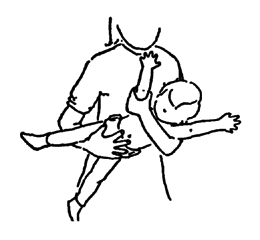
Levitt, Sophie. Treatment of Cerebral Palsy and Motor Delay. Blackwell Scientific Publications, 238 Main St., Cambridge, MA 02142 USA. Third edition, 1995.
- An advanced book, mostly on physiotherapy. Excellent information, but difficult language and presentation. Many good pictures. - Blackwell Scientific Publications, 238 Main St., Cambridge, MA 02142 USA. Third edition, 1995. An advanced book, mostly on physiotherapy. Excellent information, but difficult language and presentation. Many good pictures.
MUSCULAR DYSTROPHY
Muscular Dystrophy Association Inc., 3300 E. Sunrise Drive, Tucson, AZ 85718-3208, USA.
- Lots of pamphlets on all the different types of muscular dystrophy. This association can be very helpful for children who live in the US because they provide, and can help find, many services, (Their main focus is finding a cure.)
ARTHRITIS
Arthritis Foundation, 203 Willow Street Suite 201, San Francisco, CA 94109-7731, USA.
- A great variety of written materials on the different aspects of several types of arthritis, including juvenile arthritis. Updated information on current research and medical treatment to function with and manage arthritis.
Hampton, J. Aches and Pains. TALC, P.O. Box 49, St. Albans, Herts AL1 4AX, ENGLAND.
- A practical guide for the management of pain due to different types of arthritis.
SPINA BIFIDA
McLone, David. Introduction to Spina Bifida. Spina Bifida Association of America (SBAA), 4590 MacArthur Boulevard NW Suite 250, Washington, DC 20007, USA.
- Basic information; specially useful for those who live in the USA and can access the care and services available.
Sexuality and the Person with Spina Bifida. Available from SBAA (see address above). An important topic explained in easy terms. Different aspects of sexuality-development, activity, society-relevant to persons with spina bifida.
- Also from SBAA, Bowel Continence and Spina Bifida, and other publications; write for a list of their materials.
Welch, Collette. Spina Bifida and You: A Guide for Young People. Association for Spina Bifida and Hydrocephalus (ASBAH), 42 Park Road Peterborough, PE1 2UQ, ENGLAND.
- This and many other publications on spina bifida are available from ASBAH. Some of their materials are excellent.
SPINAL CORD INJURY
Bromley, Ida. Tetraplegia and Paraplegia: A Guide for Physiotherapists. Churchill Livingston Sales, 5 S 250 Fontenac Road, Naperville, IL 60563-1711, USA. 1991, 219 pages.
- Useful information on exercises, transfering, and how to shift weight to prevent pressure sores. Some good illustrations. Very technical.
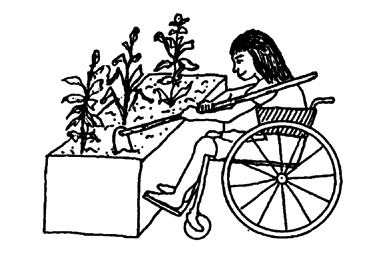
Spinal Cord Injury: A Manual for Healthy Living. RRTC, Baylor College of Medicine, 1333 Moursund B-1D7, Houston, Texas 77030- 3405 USA. Also available in Spanish.
- Excellent (but expensive) accessibly written guide for people with spinal cord injuries and their families and caregivers. Many good illustrations. Has 29 sections, including: bowel and urine management, skin care, sexual adjustment, medications, and others.
Bowel Management: A Manual of Ideas and Techniques. An ACCENT guide. (See address at the beginning of this list.)
- Clearly written. A lot of information on how to follow a bowel program. Includes discussions on diet, exercise, water intake, and use of laxatives. Also available from ACCENT, Pressure Sores: A guide to prevent, recognize, and treat pressure sores.
LEPROSY
Summers, A. Leprosy for Field Staff. The Leprosy Mission, 80 Windmill Road, Brentford, Middlesex TW8 OOH, ENGLAND, 1993, 116 pages. Free for people working with leprosy patients.
- Excellent manual for health workers who work in areas where there is leprosy. Very well written, with lots of high-quality illustrations and charts.
Pfaltzgraff, R.S. How to diagnose and classify leprosy. The Leprosy Mission (see address above). 1988, 32 pages. Free for health programs.
- This booklet explains how to examine and recognize leprosy. What questions to ask. Photographs and good drawings.
Prevention of Disability-guidelines for leprosy control programmes. ILEP Medical Comission, 1993, 40 pages. It can also be obtained from The Leprosy Mission (see address above).
- This booklet teaches how to prevent disabilities in patients with leprosy. Explains how to check eyes, hands, and feet to identify signs of disability. It includes sample forms for record keeping and follow-up.
Neville, P. Jane, editor. A footwear manual for leprosy control programmes. Volumes I and II. The Leprosy Mission (see address above).
-
Two books about special footwear for persons with leprosy. The first book is a guide for setting up a footwear making shop. The second book deals with technical aspects of making footwear and has clear, easy to follow instructions for production of shoes, boots, and sandals. Free for programs serving people with leprosy.
-
Note: The Leprosy Mission has a very complete list of high-quality publications on leprosy and related subjects. Everything is at modest prices for health workers and community programs.
McDougall, A.C. Implementing Multiple Drug Therapy for Leprosy. Oxfam Publishing, 274 Banbury Road, Oxford OX2 7DZ, ENGLAND. 1988, 64 pages.
- Written in the form of questions and answers. This book explains the required care for persons who are being treated for leprosy with multiple drugs. Useful for health workers and leaders of leprosy control programs.
EPILEPSY
Vinig, Eileen P.G. and Pillas, Diana-J. Seizures and Epilepsy in Childhood - A Guide for Parents. The Johns Hopkins University Press, 2715 North Charles Street, Baltimore, MD 21218-4319, USA. 1990, 287 pages.
- Clearly explains many aspects of epilepsy in children. A good resource for a child with epilepsy and his family. It can also be bought from the Epilepsy Foundation.
Epilepsy Foundation of America, 4351 Garden City Drive, Landover, MD 20785, USA.
- An organization that offers a great collection of publications and videos on all the different aspects of epilepsy. These are educational materials, designed for individuals with epilepsy, their families, teachers, and society in general.
BLINDNESS
Blind Children Center, 4120 Marathon St., Los Angeles, CA 90029, USA.
- This is an organization dedicated to serving blind children 5 years of age and younger. They produce a lot of written materials for families with blind children.
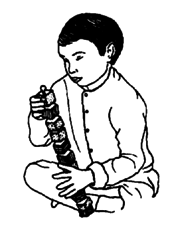
Sandford-Smith, John. Eye Diseases in Hot Climates. TALC, P.O. Box 49, St. Albans, Herts AL1 4AX, ENGLAND.
- A valuable resource for health programs. It teaches how to identify, prevent, and provide basic care for the most common eye diseases found in the tropics.
World Blind Union, CBC-ONCE, C/La Coruna 18, Madrid 28020, SPAIN.
- ONCE (National Spanish Association of the Blind) is also the home base for the World Blind Union. They have an international directory of organizations and programs for the blind. Write to them to get the names and addresses of programs in your region.
DEAFNESS
We have listed some producers of materials for deaf people. Just remember that sign language differs from place to place. Investigate and observe what works well in your region and what materials are offered there.
Wirz, Sheila W. and Winyard Sally, W. Hearing and Communication Disorders. Published by MacMillan but costs less from TALC. P.O. Box 49, St. Albans, Herts AL1 4AX, ENGLAND.
- A manual for rehabilitation programs that include or want to include services for deaf children or those with other communication problems. It simplifies a lot of techniques used by deafness professionals.
Medwid, Daria and Weston, Denise C. Kid Friendly Parenting with Deaf and Hard of Hearing Children. Gallaudet University Bookstore, see address below.
- A good book on parenting deaf children. It teaches a fun, flexible method for building good relationships between parents and children.
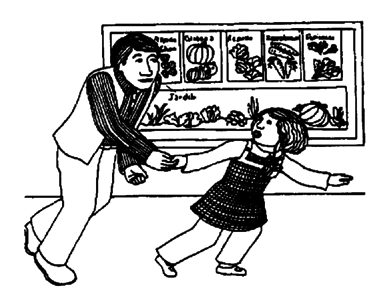
Gallaudet University Bookstore, 800 Florida Avenue NE, Washington, DC 20002-3695 USA.
- It specializes in all kinds of publications that deal with deaf ness-history, theory, education, etc. Popular children's books in sign language. Aids and equipment for deaf persons.
The Dictionary. Signing Exact English, Box 1181, Los Alamitos, CA 90720, USA. 1993, 479 pages.
- A very complete dictionary of sign language in English, very useful to anyone who wants to learn the North American system. Signing Exact English also offers many other publications and visual aids for teaching and learning sign language.
THERAPY, EXERCISES, AND POSITIONING
Hardinge, Elizabeth A., and Wilson, Patricia M.P. A Manual of Basic Phyisiotherapy for the Use of Nurses in Rural Hospitals. Tear Fund, 100 Church Road, Teddington, Middlesex, TW1 1 80E, ENGLAND, 1981, 162 pages.
- Basic; clearly presented; very useful for training rehabilitation workers.
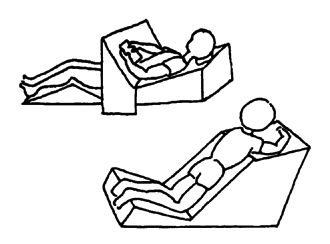
Bergen, Adrienne Falk and Colangelo, Cheryl. Positioning the Client With Central Nervous System Deficits: The Wheelchair and Other Adapted Equipment. Valhalla Rehabilitation Publications, P.O. Box 195, Valhalla, NY 10595 USA. 1985 (second edition), 237 pages.
- Detailed, in-depth discussion of adaptive seating to meet the needs of individual children with cerebral palsy. Excellent illustrations. Language is fairly complex.
Jaeger, D. LaVonne. Home Program Instruction Sheets for Infants and Young Children. Therapy Skill Builders, 555 Academic Court, San Antonio, TX 78204-1223 USA.
- Excellent, well-illustrated book of instruction sheets for many exercises. It includes range of motion exercises. (This is a revised version of the first edition by Jaeger and Hewitt,)
Stern, Linda and Steidle, Kathryn. Pediatric Strengthening Program. Therapy Skill Builders (see address above).
- Many playful activities to help increase the strength of children with disabilities or those who are recovering from surgery. Pages can be copied and given to families so they will remember how to do the exercises with their children.
Physical Therapy Assistant's Manual. Operation Handicap International, Sectur Ventes, 14 Av. Berthelot, 69361 Lyon Cedex 07, FRANCE. Three volumes of 170 pages each.
Simple manuals that teach how to provide physical therapy, The first book covers theory and basic anatomy. The second book shows therapy techniques. And the third one helps you choose an exercise program according to the particular disability. Good illustrations and clearly written.
CHILD DEVELOPMENT AND DEVELOPMENTAL DELAY
Special Education for Mentally Handicapped Pupils. Christine Miles, 4 Princethorpe Rd., Birmingham C29 5PX, ENGLAND.
- Excellent adaptation of special education to a developing community. Clearly written. A few good illustrations. Perhaps the best special education text for community programs.
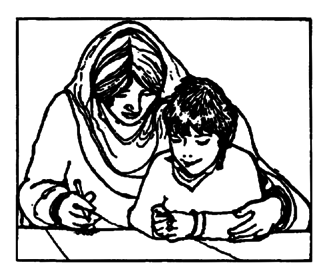
Teaching Skills. Cheshire Homes, 515 Q Jalan Hashim, Tanjong Bungah, Penang, MALAYSIA.
- A package of 6 video programs that describe teaching techniques to use with children and adults who are slow to learn. Well done and at prices that community programs can afford.
Sheda, Constance and Small, Christine. Developmental Motor Activities for Therapy- Instruction sheets for children. Therapy Skill Builders. 555 Academic Court, San Antonio, TX 78204 USA.
- Well illustrated and organized activities to promote physical development and motor skills in children. Sheets can be reproduced and given to families.
National Down Syndrome Congress, 1605 Chantilly Dr. Suite 250, Atlanta, GA 30324, USA.
- An organization that provides many small pamphlets on different issues concerning Down syndrome. They also offer a reading list for families.
BEHAVIOR TRAINING AND TOILET TRAINING
Wipfler, Patty. Listening to Children. Parents Leadership Institute, P.O. Box 50492, Palo Alto, CA 94303, USA.
- A series of 6 booklets that cover crying, fear, anger, special time, tantrums, and listening. A very new and revolutionary approach for dealing with feelings and behavior. Not written specifically for disabled children but the basic ideas work for everyone.
Azrin, Nathan and Foxx, Richard. Toilet Training in Less Than a Day. Pocket Books, 1230 Avenue of the Americas, New York, NY 10020, USA. 1974, 189 pages.
- Good instructions for 'the fast method'; oriented for the USA and Europe.
TOYS AND GAMES
Ludins-Katz, Florence and Katz, Elias. Arts and Disabilities. Institute of Art and Disabilities, 551 23rd Street, Richmond, CA 94804, USA.
- 1983, 235 pages. Ideas for starting an art center for disabled people. Materials, equipment, aids, and instruction needed for many crafts and art forms.
Levitt, Sophie. We Can Play and Move. Healthlink, 1987. Order from TALC. P.O. Box 49, St. Albans, Herts AL1 4ZX, ENGLAND.
- Fun activities to help children move and learn to balance.
Carlile, June, editor. Toys for Fun. TALC. See address above.
- A manual for making toys for pre-school children. Written in six different languages, all in one volume (English, Arabic, French, Portuguese, Spanish, and Swahili). Many illustrations.
Sher, Barbara. Extraordinary Play with Ordinary Things. Therapy Skill Builders. 555 Academic Court, San Antonio, TX 78204 USA.
- Play activities and games for children with varied levels of disability. Designed to encourage thinking, movement, coordination and balance. It uses materials and objects available in most homes.
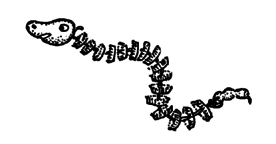
Rogow, Sally M. Shared Moments: Learning Games for Disabled Children. The Disability Bookshop, P.O. Box 129, Vancouver, WA 98666, USA.
- Learning games and activities designed to stimulate and encourage babies and children with physical, visual and developmental disabilities.
Hale, Karen. Some Crafty Things to Do. OXFAM Publishing, 274 Banbury Road, Oxford OX2 7DZ, ENGLAND. 1992, 32 pages.
- A manual for making toys from many different countries. Written for children, with good illustrations.
MIKKY: Visual Aids and Toys. Life Help Centre for the Handicapped, East Coast Road, Palavakkam, Madras 600-041, INDIA.
- A manual on the therapeutic uses of crafts-making. Many different crafts and list of suppliers. Very useful if you can find or afford the materials.
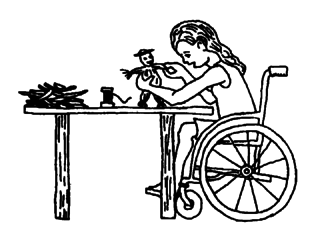
AWARENESS RAISING; POLITICS OF DISABILITY, REHABILITATION, AND MEDICINE
Miles, Mike. Where There Is No Rehab Plan. Available from The Hesperian Foundation.
- Good analysis of 'community-based rehabilitation'. It makes a valid critique of the WHO approach.
Jones, Ron. The Acorn People. Bantam Books, 2451 S. Wolf Road, Des Plaines, IL 60018, USA. 1976, 80 pages.
- A good, very human story about disabled children and their need for freedom, adventure, and understanding.
Davidson, Margaret. Louis Braille: The Boy Who Invented Books for the Blind. Scholastic Book Services, P.O. Box 120, Bergenfield, NJ 07621, USA.
- Excellent story for children about the accomplishments of a disabled child. Good reading for CHILD-to child activities.
Melrose, Dianna. Bitter Pills-Medicines and the Third World Poor. OXFAM, 274 Banbury Road, Oxford OX2 7DZ, ENGLAND. 1982, 277 pages.
- Excellent discussion of how drug companies often exploit people and endanger their health.
The Ragged Edge (formerly The Disability Rag & Resource), P.O. Box 145, Louisville, KY 40201, USA.
- A bi-monthly magazine by disabled people. A constant critic of disinformation and false ideas about people with disabilities. Good articles and analysis.
Disability Awareness in Action, 11 Belgrave Road, London SW1V 1RB, ENGLAND.
- An organization dedicated to fostering the integration of disabled people and advocating respect for their rights. Excellent materials on how to organize and maintain an organization of disabled people.
AIDS, APPLIANCES, AND SPECIAL EQUIPMENT, INCLUDING WHEELCHAIRS
How to Make Basic Hospital Equipment, compiled by Roger England. Intermediate Technology Publications, Sales Office, 103-105 Southampton Row, London WC1B 4HH, ENGLAND. 1979, 86 pages.
- Simple tube metal wheelchairs and other designs from Africa. Well illustrated and with useful comments. Fairly simple language.
A Plastic Caliper for Children. Operation Handicap International, Sectur Ventes, 14 Avenue Berthelot, 69361 Lyon Cedex 07, FRANCE.
- A manual with all the instructions to make a plastic caliper (brace) similar to the ones we describe in chapter 58. It includes information about choosing the correct caliper.
UPKARAN: A Manual of Aids For the Multiply Handicapped. Spastics Society of India, Upper Colaba Road, Opposite Afghan Church, Colaba, Bombay 400-005, INDIA. 106 pages.
- Many excellent and mostly simple aids, well illustrated. Written in English and Hindi.
How to Make Simple Disability Aids. TALC, P.O. Box 49, St. Albans, Herts AL1 4AX, ENGLAND.
- Many illustrations. Easy to make aids that are very useful. Many things that children can make themselves.
More with Less: Aids for Disabled People for Daily Living. TOOL Publications, P.O. Box 321, 2300 AH Leiden, The Netherlands.
- Simply written in English, French, and Spanish, with illustrations on every page. Very good ideas.
Personal Transport for Disabled People. Produced by Healthlink but can also be ordered from TALC, (see their address above). For a description of this book see p. 604.
Hotchkiss, Ralf. Independence Through Mobility: A Guide to the Manufacture of the ATI-Hotchkiss Wheelchair. Wheeled Mobility Center, Dept. of Engineering, San Francisco State University, San Francisco, CA 94132, USA.
- Complete instructions to make the 'whirlwind', a high-quality, low-cost steel wheelchair.
-
For a list of books about various types of personal transport for disabled people see pages 604 to 606.
ARTIFICIAL LIMBS
Pluyter, B. Alternative Limb Making. Can be ordered from TALC (see their address above).
- Teaches how to manufacture and fit low-cost, below-knee prostheses. Detail on innovative products. Provides theory and technical information.
Simple Below-knee Prosthesis Manufacture and Simple Above-knee Prosthesis Manufacture. Operation Handicap International, Sectur Ventes, 14 Avenue Berthelot, 69361 Lyon Cedex 07, FRANCE.
- Excellent; fairly simple method for making prostheses. See Page 634 for a brief overview.
Disabled Village Children
A guide for community health workers,
rehabilitation workers, and families
by David Werner
Published by
The Hesperian Foundation
P.O. Box 11577
Berkeley, CA 94712-2577
